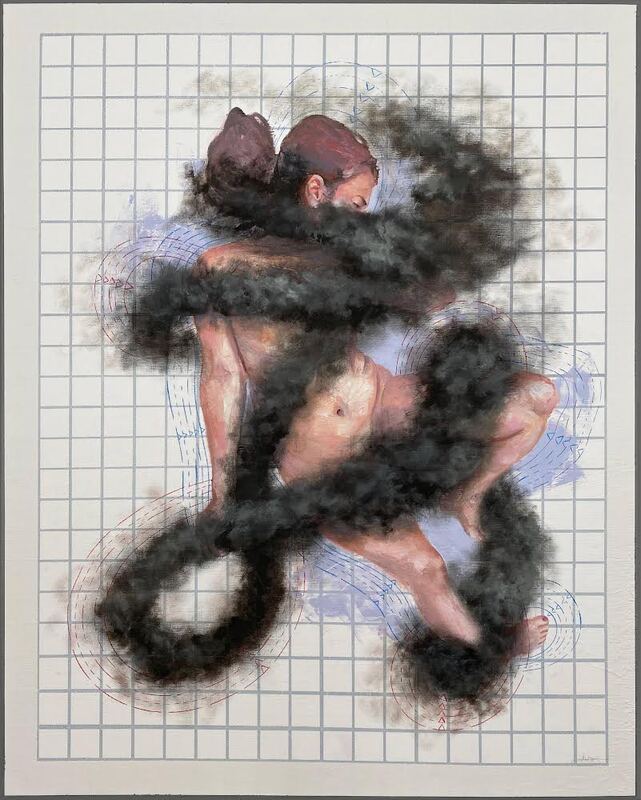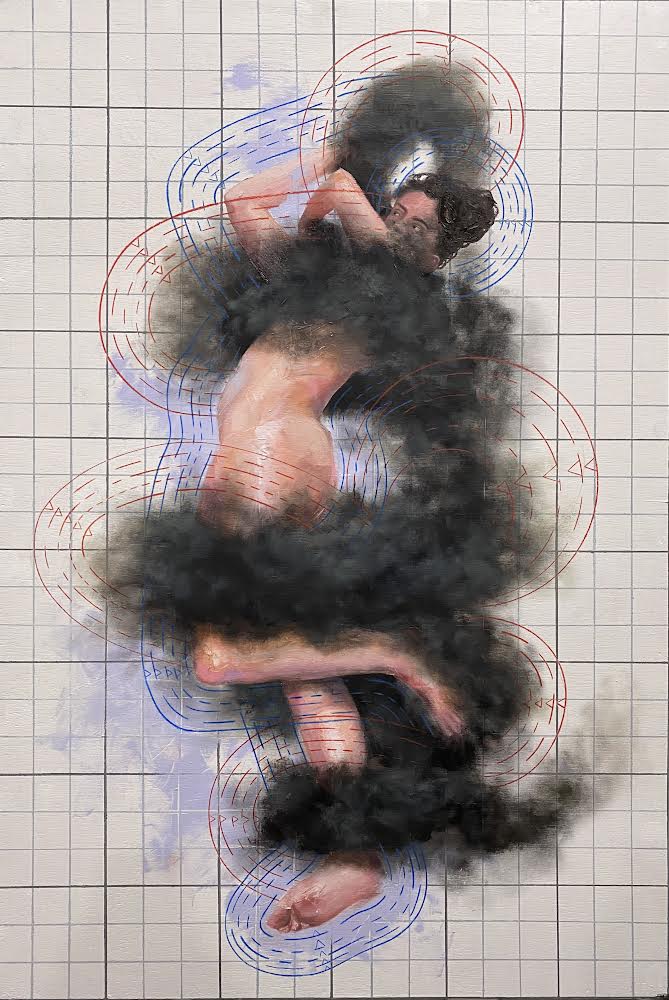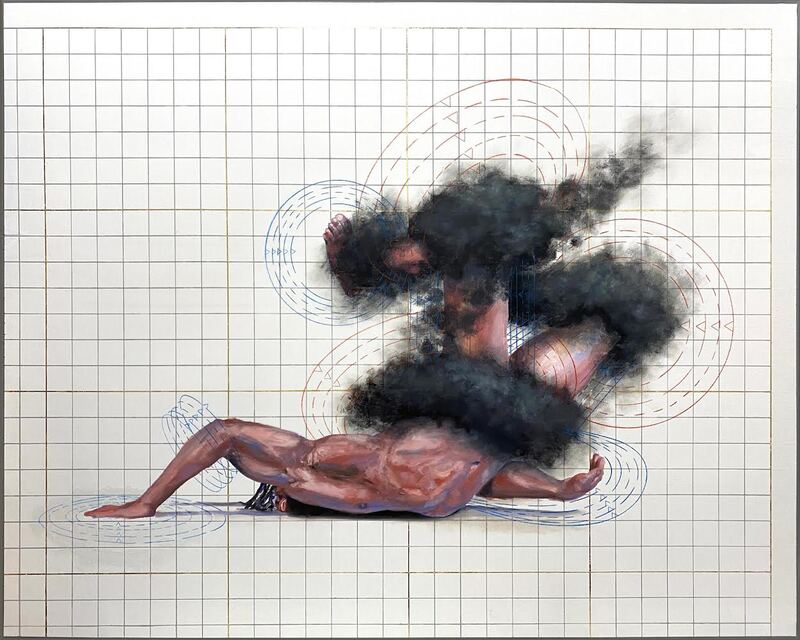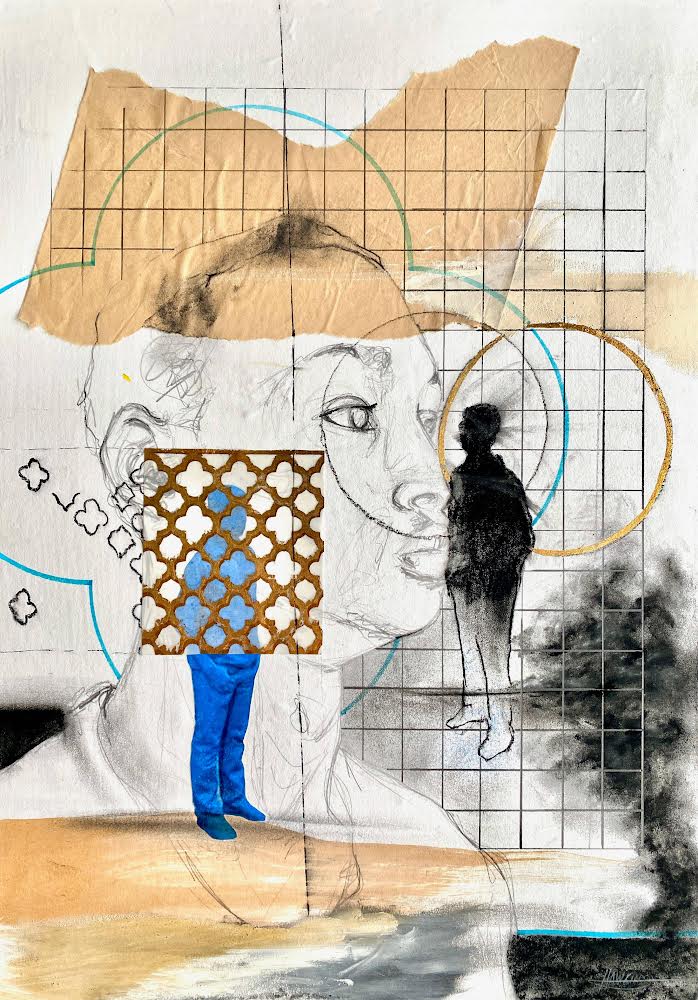Cosmos in Chaos series
“Yet I am not destroyed by the darkness, by the thick darkness that covers my face.” —Job in lament
This series began with a desire to explore humanity amidst the powers of chaos. The human figures are open invitations for personal application, painted as if in flux of an ordered system with the potential for chaotic intervention. The grid in the background mimics the aesthetic of cutting mats and sewing patterns, contrasting the unpredictability of smoke. The radiating red and blue lines, historically colors of polarizing contrast, feed off of the aesthetic vocabulary of sewing references which posit intention, purpose, and choice. Pattern and plans intertwine with a physical, material existence and the quest of identity is held within the question of the forces that triumph.
The title of this series stems from a thought by Madeline L’Engle. “All art is cosmos. Cosmos found within chaos.” Through the unpredictable haze of darkness, storms full of tests, uncertainty, selfishness, pain, hate, confusion, and shame, I lean in to L’Engle’s dichotomy, questioning both the chaos and the suggestion that art hints of one who calls forth from chaos order.
This series began with a desire to explore humanity amidst the powers of chaos. The human figures are open invitations for personal application, painted as if in flux of an ordered system with the potential for chaotic intervention. The grid in the background mimics the aesthetic of cutting mats and sewing patterns, contrasting the unpredictability of smoke. The radiating red and blue lines, historically colors of polarizing contrast, feed off of the aesthetic vocabulary of sewing references which posit intention, purpose, and choice. Pattern and plans intertwine with a physical, material existence and the quest of identity is held within the question of the forces that triumph.
The title of this series stems from a thought by Madeline L’Engle. “All art is cosmos. Cosmos found within chaos.” Through the unpredictable haze of darkness, storms full of tests, uncertainty, selfishness, pain, hate, confusion, and shame, I lean in to L’Engle’s dichotomy, questioning both the chaos and the suggestion that art hints of one who calls forth from chaos order.





